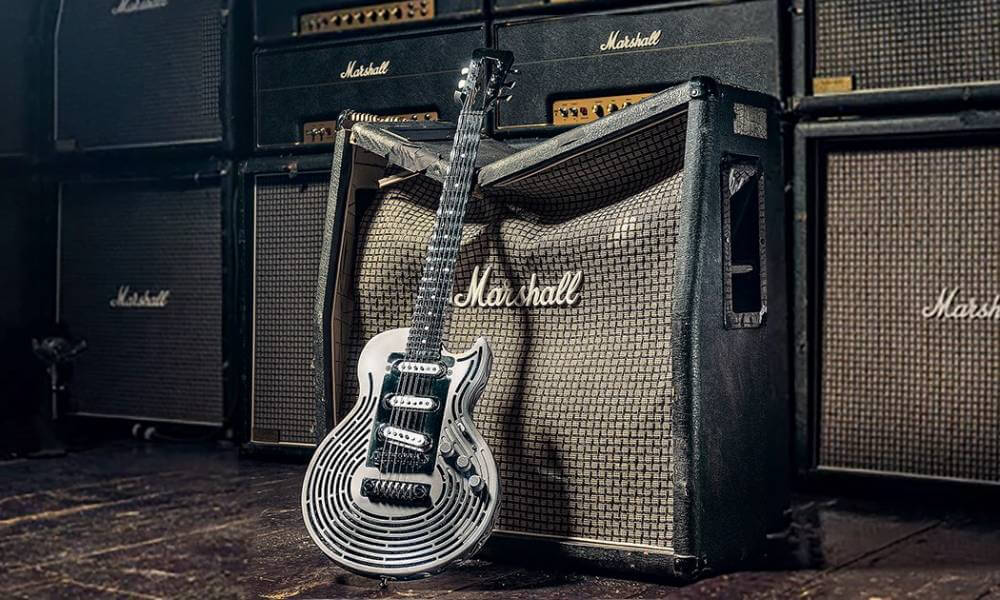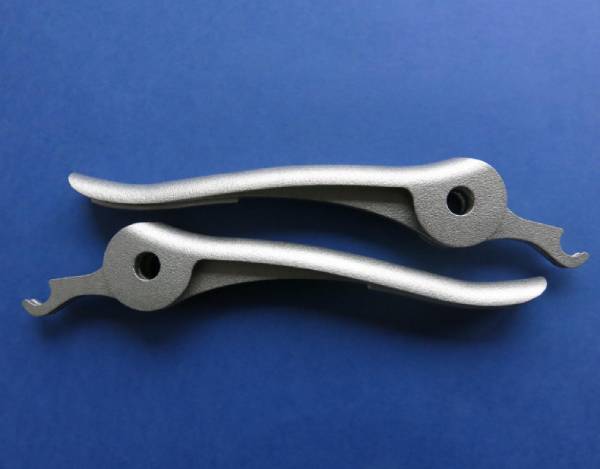Metal 3D printing: Meet the indestructible guitar
Posted By Lucie Gaget on Apr 24, 2019 | 0 comments
Do you know what is one of the most robust 3D printing materials you could use? We already told you about graphene, the wonder material. But do you know that 3D printing using metal materials allows you to get resistant, and almost indestructible parts? That is what we are about to show you.
Let’s check the metal materials properties and see how they could match your project.
The numerous advantages of metal 3D printing
Focus on two metal 3D printing technologies
If you are looking for a technique to 3D print your complex, robust, mechanical projects, then you should start to consider metal 3D printing.
We can see that for a few years, metal 3D printing is really becoming a big thing. 3D printers manufacturers are developing metal 3D printers to be more efficient, and big companies are constantly increasing their expenses in 3D printing when it comes to metal. Perfect for the production of mechanical and robust parts, metal 3D printing might just be the process you need to go through.
We will focus today on two metal 3D printing techniques: SLM and DMLS. SLM and DMLS are both incredibly efficient 3D printing technologies. What are these technologies used for? These metal technologies are particularly popular to manufacture strong parts for sectors like automotive, aerospace, and aeronautics.
How does SLM work?
SLM (Selective Laser Melting) technology is developed for 3D Printing metal alloys. It creates parts additively by fusing metal powder particles together in a full melting process. Just like in the SLS process for plastic 3D printing, your metal part will be created layer by layer, according to your 3D model. The SLM technique fully melts the metal alloy powder.
The build chamber is filled with an inert gas to create perfect conditions for the melting process. Then a laser will come to create the parts, according to your 3D model, layer by layer. At Sculpteo, you can use this technology, if you want to print your parts in Aluminium.
How does DMLS
DMLS (Direct Metal Laser Sintering) and SLM are a bit different. Indeed, SLM uses a full melting process, while DMLS is really working as the SLS technology used for plastic 3D printing.
A laser will come to sinter the powder layer by layer. The only thing is that for SLS, the temperature of the laser is of 160°C to 200°C and for DMLS, the sintering temperature is a bit higher, between 1510°C and 1600°C. While using Direct Metal Laser Sintering with our online 3D printing service, you can choose between two materials: Titanium and Stainless Steel.
Advantages of these technologies
These two technologies allow to create thin-walled objects and intricate geometries in order to manufacture lightweight designs, which is perfect to print mechanical engineering parts. Metal materials are also able to make highly detailed and complicated parts.
One of the other advantages linked to the 3D printing process is that your metal part can be produced in only one part, which is perfect for some really complex designs, and it is a way to avoid assembly time.
Metal 3D printing is perfect for you if you need to create low batches of really robust parts, with detailed design. Using a 3D printing service to create your metal parts is also an easy way to access professional metal 3D printers and different materials.
Another important thing is that using metal offer parts resistance to thermal stress. Indeed, the melting point of materials such as Titanium, Aluminium or Stainless Steel is quite high. It’s 1660° C for Titanium, 1256 °C for Aluminium, and 1400 °C for Stainless Steel.
Now, here is a simple question for you: Are you ready to try metal 3D printing? Upload your 3D model right now. You are not convinced yet? Well, let us tell you about a recent amazing project: the indestructible 3D printed metal guitar.
The indestructible 3D printed metal guitar
Here is the proof that 3D printing is amazing, as it allows the improvement of existing products. Indeed, to illustrate the amazing possibilities offered by this additive technology a metal guitar has been printed in order to show its robustness. This guitar is made to be smashed, and it is presented as indestructible.
3D printed instruments are a reality, from violins to guitars. But 3D printing can become an added value, improving the existing product, giving it new properties.
Designed by Andy Holt and manufactured by Sandvik using titanium 3D printing and DMLS technology, this indestructible 3D printed guitar has been tested by the virtuoso Yngwie Malmsteen. Known for his amazing guitar skills, but also to smash guitars on stage, he tried to smash the guitar and the result is incredible…
When other guitars are usually broken after one smash, this 3D printed metal guitar is impossible to break, as you can see in the demonstration, in the video.
Why is additive manufacturing a big advantage for this kind of projects? Thanks to 3D printing, the design has been optimized. Indeed, working on a 3D model, using CAD software, and using a technology able to manufacture strong and complex designs in only one part is making these projects possible.
By analyzing the weak points on traditional guitar, the team strengthened them with design adjustments and made it even more resistant using metal material.
Share your views with us about metal 3D printing. Are you already using one of these technologies to manufacture your strong parts? Are you planning to use them? Tell us everything.
Subscribe to our newsletter for more 3D printing news!
Image credit: Sandvik


 Connect with Google
Connect with Google Connect with Facebook
Connect with Facebook
